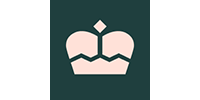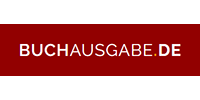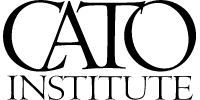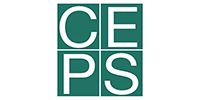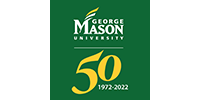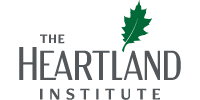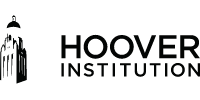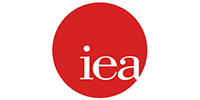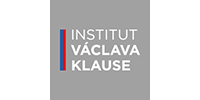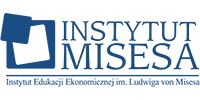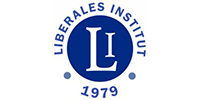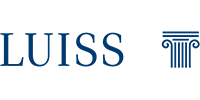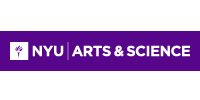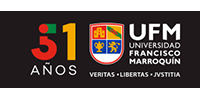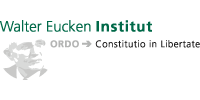School choice: arguments for and against
School choice – allowing public funding to go to privately operated educational options chosen by parents, versus going only to assigned schools created and controlled by government – is an international phenomenon. Many countries have adopted choice to varying degrees to defuse religious conflicts. Others have sought free-market efficacy. Many have seen free-market education emerge in the absence of state education. Whatever the reasons, non-public education has been spreading with increased rapidity. But this has not been without controversy. This paper looks at the major debates surrounding school choice worldwide, including over academic and socioeconomic stratification; religion; and academic effectiveness. It then looks at some common approaches to mitigate these concerns.
Introduction
Public schooling, defined as government providing education, to all or large swaths of a population at little or no cost to families, in schools it establishes and runs, and to which it assigns students, is a relatively new phenomenon. The first such system is usually traced to Prussia, though historian Charles Glenn draws the origins to Martin Luther, who called for the government to take over education that had been the preserve of religious authorities and families. In 1530, Luther declared in a sermon, “I maintain that the civil authorities are under obligation to compel the people to send their children to school, especially such as are promising.”1 Various German governments passed measures creating schools in the sixteenth century. Prussia, under King Frederick William I, moved state control forward with laws in 1713 and 1717 requiring education for all children and that governments cover the tuition of poor children.2 But it was not until the aftermath of defeat by the French army in 1806-07 that the idea of nationally uniform public schooling to create within the people powerful bonds to the state came to the fore.3 Major thinkers in the nascent United States – a decentralized, relatively laissez-faire county – also became enamored of the idea and the Prussian system.4 Given this spectrum, it is little surprise that state control of education become the norm across the globe.
Without public schooling, the idea of school choice – defined as public funding in some way being applicable to plural educational options, selected by families – would be meaningless. Absent government-controlled schooling, chosen education would be the default. So the idea of school choice, as defined above, is younger than public schooling, though free-market provision of education long predates public schooling.5 As public schooling emerged and evolved, importantly, it often took on elements of choice and public-private combinations. It also, in many places, featured longstanding conflicts over the nature and degree of government control, which started to play out after the World wars of the twentieth centuries. In 1929, for instance, Pope Pius XI called for “financial aid granted by the State” to go “to the several schools demanded by the families.”6 After World War II, the 1948 United Nations’ Universal Declaration of Human Rights, at the urging of countries that feared repeating the nationalistic effects of German education, stated that “parents have a prior right to choose the kind of education that shall be given to their children.”7 And as Keynesian economics was in ascendance and the Cold War was growing, free-market economists such as Milton Friedman began make an economic efficiency case to decouple public funding of education from provision, letting money follow the decisions of parents.8 Friedman’s work is seen by many people in the school choice movement, at least in the United States, as signaling the start of the modern school choice movement. But his influence was not restricted to the United States: Friedman also directly influenced the adoption of widespread school choice in Chile in 1981 and was cited in Sweden as the inspiration for its sweeping 1992 pro-choice education reforms.9 Today, school choice, and the role of free markets in delivering education, are major parts of the global public education debate.
Where the world stands
UNESCO data show that the share of primary pupils in private schools has risen from 8 percent in 1980 to 19 percent in 2022, and secondary students from 19 percent in 2002 to 27 percent in 2022. 10 Much of the growth has come from outside the Europe and North America, especially The Middle East and North Africa, South Asia, and Sub-saharan Africa.11 Importantly, much of the growth is not the product of school choice initiatives, such as government funding going to plural schools, or families to control. Verger, Zancajo, and Fontdevila have produced a helpful chart (figure 1) showing six major routes they observe governments having followed to “privatization,” defined essentially as government increasingly putting the provision of education in private hands.
Figure 1: Paths Toward Privatization

Source: Antoni Verger, Adrián Zancajo, and Clara Fontdevila, “Private sector participation in education: where it occurs, and why,” UNESCO, February 24, 2020, https://world-education-blog.org/2020/02/24/private-sector-participation-in-education-where-it-occurs-and-why/
While there is much overlap among all of the routes followed – choice advocates in the same country have, for instance, often advanced both “state church compromise” and “pro-nmarket” arguments – the graphic is useful. Importantly, the grouping Verger, Zancajo, and Fontdevila designate “de facto privatization in low-income countries” explains much of the growth in private enrollment. Many developing countries have seen the rise of low-cost, for-profit, private schools in the last few decades, as state provision of education has either proven insufficient or unacceptable.12 Much of this has been absent government aid – so not through school choice programs – but many of these countries are starting to make private provision quasi-public, with public-private partnerships and other aid to the schools.13 With that in mind, “school choice” comes in many forms, and it is useful to know the spectrum. Overall, provision can range from only government schools coupled with government assignment to institutions on one end, and free markets with no government involvement on the other. Most systems fall between those, with almost all allowing private provision and many providing significant choice among public schools, or with government assistance for private education.
Within public schooling, as of 2010 the OECD reported 37 out of 46 member or partner nations having “initial assignment” to schools “based on geographical area,” but also 26 of 45 giving families “a general right to enrol in any traditional public school they wish.” 14 Moving beyond that, countries such as England, and most states in the United States, have public-private hybrid schools, in which ostensibly private entities run officially public schools that are government significant autonomy over their operations. These are called “charter schools” in most American states, and “academies” or “free schools” in England. (A free school is actually just a form of academy – one created after 2011 not formed from an pre-existing school.)15
Finally, within private provision there are typically “private-aided” and “private-unaided” schools, with the former receiving government funding often in exchange for more government control over things like curricula, teacher hiring, and the ability to award government-recognized credentials, and the latter tending to be more independent both in terms of funding and operations. Of course, the degree of autonomy for any school type varies from country to country.
The Debates
Reiterating that the specifics of education provision, and therefore the controversies over provision, vary from country to country, there are three major concerns and tensions concerning choice that are significant in many countries: (1) Academic and socioeconomic stratification versus free choice; (2) cohesion and safety versus religious equality; and (3) academic effectiveness. I take each in turn.
Stratification
Thinking through school choice, it is easy to see how it could be a mechanism for bringing socially distant groups closer together and how it could create greater separation. For the former, the higher a person or family’s income, the easier it is to separate oneself from poorer people by buying a home in a wealthy public school catchment area or paying for sometimes pricey private education. Giving families control over public education funding, or making a multiplicity of autonomous schools free through direct government subsidies, could weaken the connection between school and home and begin to equalize what people with different incomes can pay for private schooling.
On the other side, empowering families to choose among diverse educational options could lead to “balkanization” – clustering of similar people. This is most feared with regards to religion and other values, but it could also occur by class. Basically, empowering families to leave a school intended to serve all people in a set geographic space, especially if that space includes people from a wide variety of socioeconomic backgrounds, would enable siloed sorting. Especially concerning in many countries is that financially poorer families would be left behind as families with more wealth or cultural capital used choice to leave public schools. The OECD has devoted a great deal of attention to the possibility that more choice would lead to socioeconomic stratification, with the rich and middle class gravitating away from schools that also serve poor or otherwise marginalized populations.16
Choice mechanisms have reformed to address it in countries such as Chile and India. In 2008, to lessen perceived stratifying effects of the country’s extensive school choice system, Chile weighted funding so that lower-income students received higher voucher amounts.17 The government of India passed a law in 2006 requiring that all un-aided private schools reserve at least a quarter of their seats for students from the country’s lower castes or other disadvantaged backgrounds. Not surprisingly, operators of such schools called for the government to compensate them for such enrollments.18
Sorting by academic ability is another possible driver of stratification that worries the OECD. Desires for better academics would tend to pull families toward schools with higher concentrations of wealthy families, as wealth in all countries tends to correlate highly with standardized test scores and other measures of academic achievement.19
This could be especially concerning for lower-income families, with research often showing that a drain of higher social status and higher-achieving students can hurt lower-income students not just because of possibly declining resources, but a loss of positive “peer effects,” including exposure to students with greater cultural capital and focus on tertiary education.20 Of course, the tension is that different students have different abilities, and parents tend to want what is best for their individual child, which would tend stratify without anyone consciously desiring that. And an education system goal of allowing each child to maximize their abilities seems at least as laudable as a goal of producing more equal outcomes. The status quo, according to an OECD analysis, is that in most countries private schooling has little effect on elementary and secondary socioeconomic segregation, though private schools tend to disproportionately enroll more higher-income families than public schools, likely as result of, in many cases, still having to charge families rather than being completely free. This essentially null effect is because in many countries private schools account for a very small percentage of total enrollment, and segregation, especially with academic tracking, is often prevalent.21 That said, in nine countries social segregation was greater in public schools than private, with especially sizeable differences in Costa Rica, the Republic of North Macedonia, Slovenia, and Vietnam.22
What is the effect of school choice programs on stratification? The OECD says it is “ambiguous.”23 Looking across a few iterations of the PISA examination and controlling for academically selective school shares, students repeating grades, and more, OECD analysts found no large, statistically significant effects of choice policies on stratification.24
Religion
Verger, Zancajo, and Fontdevila identify the Netherlands, Belgium, Spain, and Argentinanas having arrived at school choice to “achieve a state-church compromise.” This is true,nespecially in the cases of the Netherlands. Indeed, Glenn notes that a major reason that Belgium seceded from the United Netherlands was to escape the nationalization of schooling, giving it “the distinction of being possibly the only country in the world whose very existence resulted in substantial part from controversy over education.”25 After decades of schoolstrijd – political warfare to determine if the state schools would be Protestant, Catholic, or secular – to foster peace, in 1917 the by then Belgium-less Netherlands instituted what has probably become the most extensive system of school choice in the world: Money follows students to private schools, and if as few as 200 parents decide they want a type of school that is not currently accessible to them, government will fund it.26
These are not the only countries, however, where religion was problematic for public schools, or where it played an important part in fostering school choice polices. Horace Mann, the American “father of the common school,” reported after travelling to Prussia to study its education system that even there the government had to allow parents to access either Catholic or Protestant schools, and that while most families seemed unfazed by compulsory school attendance, they became very unhappy if their children were “compelled to receive instruction in a religious creed from which their parents dissent.”27 Several Canadian provinces include choice, especially among Catholic and Protestant schools, in part originally to avert religious battles over the education.28 And the primary driver of efforts to get government funding for plural schools in the 19th century United States was to accommodate religious differences, especially for Catholics, because American public schools tended to be de facto Protestant. Religious equality continues to be a significant part of the American school choice debate.29
The religious argument for choice is typically that a single system of state schools cannot equally include the full religion of all people. Individual schools to which students are assigned, or entire systems, will tend to favor one religion over another, or no religion at all, thus discriminating against faith minorities. The broad counter concern is that allowing religious choice will balkanize – people of different faiths will cluster with co-religionists – and fragment society, possibly also exacerbating religion-based conflicts. Today, a lot of the concern about religion and school choice is about assimilation and extremism. The latter includes the application of religious principles in education that some see as hateful or just discriminatory, as opposed to teaching religion itself. In part this is a product of broad secularization in many countries, which has lessened or eliminated old cleavages such as between Roman Catholics and Protestants, and brought to the fore tensions between religion and secularism, and religious minorities and national identity.
Incorporating Muslim populations has become a sizeable issue in many European countries, including the role of the education system in assimilating Muslim immigrants and trying to prevent “extremism.” France, with its famous focus on national laïcité – secularism – is perhaps most notable for its very strict assimilation demands, going so far as to ban the wearing students from wearing religious clothing such as abayas in public schools. France has government-aided and unaided private schools, but these are dominated by Catholic schools in the still culturally Catholic country, while Islamic schools are few and far between, in part because of greater difficulties getting permits and funding to operate.30 Muslim families sometimes attend Catholic private schools because, while clearly not Muslim, they are less hostile to religion overall.31
Concerns about assimilating Muslim immigrants, and efforts to short-circuit extremist Muslim views, have also posed concerns about widespread choice in the Netherlands, Sweden, and other countries that have adopted relatively extensive school choice systems. In the Netherlands, concerns have been raised about the teachings in some government-aided Muslim schools, and there is worry about radicalization in unaided schools that are not subject to government inspection.32 In Sweden, between 2019 and January 1, 2023, seventeen Muslim schools were shut down by the government, leaving only two Muslim school remaining. Government school inspectors pointed to various deficiencies in shutting the schools down, including that the managers of one school were “unfit to conduct school activities after it was assessed that children are at risk of being exposed to radicalization.”33 That said, research suggests that there is not a meaningful, large-scale radicalization threat from Muslim schools.34
School choice in the United States has also been heavily subject to religious objections. For many decades opposition to choice grounded in religion was primarily about the legality of any government funding going to religious schools, even through the free decisions of parents. This is due to the country’s somewhat unusual, longstanding strict separation of church and state. At least, strict on paper; as noted, for much of the history many American public schools were de facto Protestant, with regular readings from the King James version of the Bible, singing of Protestant hymns, and sometimes instruction highly critical of the Roman Catholic Church. In the 1960s, however, the U.S. Supreme Court prohibited such practices and all public schools had to legally become more truly secular.35 The response was increasing interest in school choice among Protestants, especially of more conservative strains. This was met by the objection that allowing public funding to in any way go to religious schools would violate both the First Amendment of the U.S. Constitution, and even more strict “compelled support” or “Blaine” amendments in state Constitutions.
Starting in 2002 this objection started to erode, with the U.S. Supreme Court finding constitutional under the federal Constitution a voucher program that allowed funding to follow students to religious schools. 36 A long series of cases has continued to steadily advance choice, with the Supreme Court most recently ruling that not only could states not exclude religious schools from state choice programs, they had to allow those schools to fully exercise their religion.37 With church-state separation issues largely resolved legally, the remaining major religious objection to choice involves primarily concerns about application of religious principle to school operations such as admissions and student discipline. In particular, allowing families to use funding connected to government – vouchers or even tax credits – to choose schools governed by religious convictions that require policies some people consider discriminatory.
For instance, many people object to choice of schools with policies that forbid employees to be in same-sex marriages, or students to embrace gay or transgender lifestyles.38 These are traditional views of the nature of the person and morally correct behavior for some religions, but they also discriminate against specific classes of people. Some choice opponents are also concerned that such schooling inculcates intolerance, and a major purpose of education is to foster understanding and unity.39 Of course, for religious people who feel that secular public schooling excludes them, the public school system is hostile and marginalizing.
Academic Outcomes
The purpose of education is for students to learn, and school choice could have a positive or negative influence on that. Positive, if free-market theorists such as Milton Friedman, but going as far back as Adam Smith, are right that educators needing to attract freely choosing students is a key incentive to work hard. 40 A corollary to this is that public control of education becomes inefficient due to creeping bureaucracy and control by people who lard on jobs and rules well beyond schools’ basic educational functions.41 Worries about the failure of public schooling academically, especially for children in the poorest-performing, typically-low income schools and districts, drove much of the modern school choice movement in the United States, as well as countries and jurisdictions in many of Verger, Zancajo, and Fontdevila’s paths. That includes “catastrophe” site New Orleans, which had a public school system with very poor academic outcomes that was widely considered politically and bureaucratically paralyzed long before Hurricane Katrina hit and devastated the region.42 The idea behind moving to an all-charter model was that autonomous, chosen schools would be freed from the political and bureaucratic sclerosis that had long beset the New Orleans public schools.
The flip side concern is that school choice will result in lower academic results for a host of possible reasons, especially that parents have low information about what children need educationally and of what schools provide, and that the ability of parents to leave a school, and take money with them, holds school insufficiently accountable for results. 43 This has become a major, but somewhat recent critique of school choice in the United States, where the debate was dominated earlier by concerns about church-state separation and “siphoning” money from public schools. But some recent studies of private choice programs, including using “gold-standard”
randomized control trials (RCT), have found that students attending private schools via choice programs had significantly worse outcomes on standardized examinations than students selected to receive choice funding who remained in public schools.44
Sweden has also seen significant concern about its extensive choice system, which even allows schools to operate for-profit. A marked decline in the country’s performance on the PISA examination has roughly coincided with the introduction of its widespread school choice system.45 In 2017, Andreas Schleicher, the head of the OECD’s Directorate of Education and Skills, chalked up Sweden’s precipitous drop in the 2013 PISA administration to freedom of choice and overall deregulation of education.46 What is the effect of school choice on academic achievement? Keeping in mind that all jurisdictions, programs, and assessments are different, research overall suggests that choice likely has only a small impact on achievement one way or another, at least as measured by standardized examinations. For instance, while recent RCTs in the U.S. state of Louisiana have found very negative effects, the overall body of RCT studies on U.S. choice programs have tended to be positive, though with small overall effects.47 And the Louisiana program has a number of strictures on recipients that appears to have kept higher quality private schools from participating.48
In Sweden, it is difficult to disentangle the effects of choice from changes in the overall Swedish approach to education, which became more progressive in its pedagogy, including eliminating grading academic work below the sixth grade and moving from direct teacher instruction to more project-based learning.49 Schools also face many regulations that constrain how they can operate and where they exist. That said, one study found that increasing choice leads to better academic achievement, but only over a span of about ten years, as the system is able to mature.50 Examining school choice across countries, the OECD has found mixed results, but that lean slightly in the direction of choice producing better outcomes.
On the negative side, the 2020 analysis of PISA results found that students attending private schools tended to have higher
scores than public school students, but lower after adjusting for socioeconomic status.51 However, it also found that a school having to compete with two other schools, after adjusting for per- capita GDP, had a positive 0.21 correlation with performance at the .05 significance level. The OECD’s 2019 report also found a positive relationship between competition and achievement, but it was small and not statistically significant.52 Still, the authors wrote, “One may conclude from this estimation that the availability of private schools, as it induces greater competition, may result in better school performance.” Indeed, this has been found for public schools facing private competition in 26 out of 29 studies of U.S. programs.53
Of course, a major shortcoming of judging choice by test scores is that standardized tests might not be the most accurate measures of learning, and even if accurate, might not capture what people primarily want out of education. Two international exams – PISA and TIMSS – are, for instance, very different, testing different age groups and asking very different types of questions.54 Meanwhile, East Asian countries, which tend to dominate international exams, have been looking for ways to get their education systems to better foster “soft” – and difficult to test – skills like critical and creative thinking.55 And people often place high academic achievement lower on their lists of educational desires than things like learning practical skills, such as basic financial management, critical thinking, and character building.56 Finally, while some analysts
have associated higher scores with greater economic outcomes, others have found weak relationships between high-stakes tests and important lifetime outcomes such as arrests, teen motherhood, and work.57
Finding a Balance
Governments across the globe have struggled to balance the desire for diverse citizens to have power and freedom with counterbalancing desires for social cohesion and harmony. This has typically been via an approach some call “pluralism”: families able to choose among educators that can provide education informed by different religious and philosophical worldviews – Catholic, Muslim, secular – so that diverse understandings of “the good” are treated equally by government. But this is coupled with requirements that all schools, especially if they receive government funding, teach a shared curriculum and that all, diverse people and traditions must be tolerated in society. This often takes the form of a national curriculum coupled with national tests. It can also involve a government inspectorate, in which government agencies visit schools and asses their curricular program and overall climate, and other regulations constraining things such as admissions policies.58
Weighted student funding of some type – possibly funding for all students but scaled down for wealthier ones, possibly choice programs with income ceilings – is also used to try to focus choice on lower-income students and more closely equalize funding. Income caps, or programs focused on students with disabilities or in poorly performing public schools, was the norm for about three decades in the United States, with the first “universal” program – meaning all families qualify – not enacted until 2022 in Arizona. The Chilean reforms mentioned earlier were another effort to give greater benefit to lower than higher income students.
Conclusion
Incorporating choice in elementary and secondary education is a response to a basic human reality: All people are different, and diverse people often need or want different things out of education. On the flip side, most people would also probably like to live in harmonious societies where everyone has a roughly equal chance of success. The debates we see about school choice across the globe reflect the tension between these two laudable, but at least at first glance contradictory, goals.
Neal McCluskey
Director, Center for Educational Freedom, Cato Institute
1 Luther quoted in Charles L. Glenn, Contrasting Models of State and School: A Comparative Study of Parental Choice and State Control (New York: Continuum, 2011), p 5.
2 Charles L. Glenn, Contrasting Models of State and School: A Comparative Study of Parental Choice and State Control (New York: Continuum, 2011), p. 9.
3 Charles L. Glenn, Contrasting Models of State and School: A Comparative Study of Parental Choice and State Control (New York: Continuum, 2011), pp. 40-41.
4 Charles L. Glenn, Contrasting Models of State and School: A Comparative Study of Parental Choice and State Control (New York: Continuum, 2011), p. 53.
5 See Andrew J. Coulson, Market Education: The Unknown History (New Brunswick, NJ: Transaction, 1999)
6 Charles L. Glenn, The Myth of the Common School (Amherst, MA: the University of Massachusetts Press); Pope Pius XI, Divini Illius Magistri, Dec. 31, 1929, https://www.vatican.va/content/pius-
xi/en/encyclicals/documents/hf_p-xi_enc_31121929_divini-illius-magistri.html.
7 James Stanfield, “Parental choice and the right to education: Revisiting Article 26 of the Universal Declaration of Human Rights,” Non-state actors in education: Background paper prepared for the Global Education Monitoring
Report Non-state actors in education, ED/GEMR/MRT/2021/P1/36, 2021
8 Milton Friedman, “The Role of Government in Education” in Robert A. Solo, ed., Economics and the Public Interest (New Brunswick, NJ: 1955), pp. 123-144; Milton Friedman, Capitalism and Freedom (Chicago: University
of Chicago Press, 1962), pp. 85-107.
9 Tino Sanandaji, “Sweden Has an Education Crisis, But It Wasn’t Caused by School Choice,” National Review Online, July 21, 2014, https://www.nationalreview.com/the-agenda/sweden-has-education-crisis-it-wasnt-caused-
school-choice-tino-sanandaji/
10 “School enrollment, primary, private (% of total primary),” The World Bank, September 19, 2023, https://data.worldbank.org/indicator/SE.PRM.PRIV.ZS; and “School enrollment, secondary, private (% of total
secondary),” The World Bank, September 19, 202, https://data.worldbank.org/indicator/SE.SEC.PRIV.ZS.
11 Antoni Verger, Adrián Zancajo, and Clara Fontdevila, “Private sector participation in education: where it occurs, and why,” UNESCO, February 24, 2020, https://world-education-blog.org/2020/02/24/private-sector-participation-
in-education-where-it-occurs-and-why/.
12 See also James Tooley, The Beautiful Tree: A Personal Journey Into How the World's Poorest People are Educating Themselves (Washington, DC: Cato Institute, 2013); and Pauline Dixon and Steve Humble, eds., School
Choice around the World…and the Lessons We Can Learn (London: Institute for Economic Affairs, 2021).
13 Antoni Verger, Adrián Zancajo, and Clara Fontdevila, “The Privatisation of Education: A Global Phenomenon with Multiple Faces,” NORRAG Global Education Centre, September 7, 2016, https://www.norrag.org/the-
privatisation-of-education-a-global-phenomenon-with-multiple-faces/
14 PISA, “Balancing School Choice and Equity: An International Perspective Based on PISA,” OECD, 2019, p. 31.
15 Toby Young, “English Education Reform: Past, Present and Future,” in Pauline Dixon and Steve Humble, eds., School Choice around the World…and the Lessons We Can Learn (London: Institute for Economic Affairs, 2021),
pp. 13-19.
16 See PISA, “Balancing School Choice and Equity: An International Perspective Based on PISA,” OECD, 2019.
17 Gregory Elacqua, “The impact of school choice and public policy on segregation: Evidence from Chile,” International Journal of Educational Development 32, no. 3 (May 2012): 444-453.
18 Anupreeta Das, “India's lower castes can now go to private schools,” The Christian Science Monitor, February 13, 2006.
19 See, for instance, OECD, “Mathematics performance by socio-economic status,” PISA 2022 Results, https://www.oecd.org/publication/pisa-2022-results/.
20 See, for instance, Ron W. Zimmer and Eugenia F. Toma, “Peer Effects in Private and Public Schools across Countries,” Journal of Policy Analysis and Management 19, no. 21 (Winter 2000): 75-92.
21 PISA, “Balancing School Choice and Equity: An International Perspective Based on PISA,” OECD, 2019, p. 55.
22 PISA, “Balancing School Choice and Equity: An International Perspective Based on PISA,” OECD, 2019, p. 55.
23 PISA, “Balancing School Choice and Equity: An International Perspective Based on PISA,” OECD, 2019, p. 58.
24 PISA, “Balancing School Choice and Equity: An International Perspective Based on PISA,” OECD, 2019, p 58-63.
25 Charles L. Glenn, Contrasting Models of State and School: A Comparative Study of Parental Choice and State Control (New York: Continuum, 2011), p, 73.
26 Harry Anthony Patrinos, “School Choice in the Netherlands,” CESifo DICE Report 2/2011, https://core.ac.uk/download/pdf/6656853.pdf.
27 Horace Mann, “Report for 1843,” in Mary Mann, ed., Life and Works of Horace Mann (Boston: Horace B. Fuller, 1868), p. 367.
28 Lynn Bosetti, Deani Van Pelt, and Derek J. Allison, “The changing landscape of school choice in Canada: From pluralism to parental preference?” Education Policy Analysis Archives 25 (Winter 2017), https://epaa.asu.edu/index.php/epaa/article/view/2685.
29 Neal P. McCluskey, The Fractured Schoolhouse: Reexamining Education for a Free, Equal, and Harmonious Society (Lanham, MD: Rowman and Littlefield, 2022), 34-57; Nicole Stelle Garnett, “Supreme Court Opens a Path
to Religious Charter Schools,” Education Next 23, no. 2 (2023): 8-15.
30 Carol Ferrara, “French schools’ ban on abayas and headscarves is supposedly about secularism − but it sends a powerful message about who ‘belongs’ in French culture,” The Conversation, September 29, 2023,
https://theconversation.com/french-schools-ban-on-abayas-and-headscarves-is-supposedly-about-secularism-but-it- sends-a-powerful-message-about-who-belongs-in-french-culture-213543.
31 Katrin Bennhold, “French Muslims Find Haven in Catholic Schools,” New York Times, September 28, 2008.
32 Ina Ter Avest, Cok Bakker and Leni Franken, “Islamic Religious Education in the Netherlands” in Leni Franken and Bill Gent, eds., Islamic Religious Education in Europe: A Comparative Study (New York: Routledge, 2021),
189-190.
33 Bashir Mohamed Caato, “Muslim children disconsolate as Sweden forces Islamic schools to shut,” Middle East Eye, January 1, 2023, https://www.middleeasteye.net/news/sweden-islamic-schools-shut-muslim-children-
disconsolate.
34 Per Mouritsen, Nanna Vestergaard Ahrensberg, & Jensen Kirstian Kriegbaum, “No trade-off between parent choice and democratic citizenship: a comparison of 9th grade pupils in Danish Muslim and state schools,” British
Journal of Sociology of Education 44, no. 1 (January 2023): 164-182; M. Danish Shakeel and Patrick Wolf, “Does Private Islamic Schooling Promote Terrorism? An Analysis of the Educational Background of Successful American
Homegrown Terrorists,” Education Reform Faculty and Graduate Students Publications, November 10, 2017.
35 See Engel v. Vitale, 370 U.S. 421 (1962) and Abington School District v. Schempp, 374 U.S. 203 (1963).
36 Zelman v. Simmons-Harris, 536 U.S. 639 (2002).
37 See and Carson v. Makin, 596 U.S. 767 (2022).
38 See, for instance, Katie Aiken, “Advocates: School choice bill could shut out LGBTQ students,” Iowa Capital Dispatch, March 3, 2021, https://iowacapitaldispatch.com/2021/03/03/advocates-school-choice-bill-could-shut-out-
lgbtq-students/; Jorge Gomez, “Maine Keeps Trying to Exclude Religious Schools from State School Choice Program,” First Liberty (blog), March 31, 2023, https://firstliberty.org/news/maine-keeps-trying-to-exclude-
religious-schools/.
39 Rebecca Klein, “Voucher Schools Championed By Betsy DeVos Can Teach Whatever They Want. Turns Out They Teach Lies.” Huffington Post, December 7, 2017, https://www.huffpost.com/entry/school-voucher-evangelical-
education-betsy-devos_n_5a021962e4b04e96f0c6093c.
40 See Milton Friedman, “The Role of Government in Education” in Robert A. Solo, ed., Economics and the Public Interest (New Brunswick, NJ: 1955), pp. 123-144; Milton Friedman, Capitalism and Freedom (Chicago: University
of Chicago Press, 1962), pp. 85-107; Paul Mueller, “Adam Smith on Public Policy: Teacher Compensation,” Libertarianism.org, December 1, 2015, https://www.libertarianism.org/columns/adam-smith-public-policy-teacher-
compensation.
41 For a discussion of how democratic control of public schooling handicaps education, see John E. Chubb and Terry M. Moe, Politics, Markets, and America’s Schools (Washington, DC: Brookings Institution Press, 1990).
42 See, for instance, Left Behind: The Story of the New Orleans Public Schools, which follows students in the district who graduated right before Hurricane Katrina struck: https://www.thestudioat620.org/events-archive/2008-
2012/hbtsotnops.htm.
43 Douglas N. Harris, “How Free Market Logic Fails in Schooling— and What It Means for the Role of Government,” Annenberg Brown University EdWorkingPaper No. 23-866, November 2, 2023.
44 For a summary, see Joshua Cowen, “Research on school vouchers suggests concerns ahead for education savings accounts,” Brookings Institution, August 15, 2023, https://www.brookings.edu/articles/research-on-school-vouchers-
suggests-concerns-ahead-for-education-savings-accounts/.
45 Nick Cowen, “The Powers and Limits of a National School Voucher System: the Case of Sweden,” in Pauline Dixon and Steve Humble, eds., School Choice around the World…and the Lessons We Can Learn (London: Institute
for Economic Affairs, 2021), pp. 54-55.
46 The Local Sweden, “Deregulation and freedom of choice have hurt Sweden's schools: Pisa head,” The Local se, May 23, 2017, https://www.thelocal.se/20170523/deregulation-and-freedom-of-choice-have-hurt-swedens-schools-
pisa-head.
47 Atila Abdulkadiroğlu, Parag A. Pathak, and Christopher R. Walters, “Free to Choose: Can School Choice Reduce Student Achievement?” American Economic Journal: Applied Economics 10, no. 1 (January 2018): 175-206;
EdChoice, The 123s of School Choice, October 5, 2023, https://www.edchoice.org/research-library/?report=the- 123s-of-school-choice-3/.
48 Jason Bedrick, “The Folly of Overregulating School Choice,” Education Next, January 5, 2016, https://www.educationnext.org/the-folly-of-overregulating-school-choice/.
49 Tino Sanandaji, “Sweden Has an Education Crisis, But It Wasn’t Caused by School Choice,” National Review Online, July 21, 2014, https://www.nationalreview.com/the-agenda/sweden-has-education-crisis-it-wasnt-caused-
school-choice-tino-sanandaji/.
50 Anders Böhlmark and Mikael Lindahl, “Independent Schools and Long-Run Educational Outcomes: Evidence from Sweden’s Large Scale Voucher Reform,” Discussion Paper no. 6683, IZA, June 2012.
51 PISA, PISA 2018 Results (Volume V): Effective Policies, Successful Schools, 2020, 157-167.
52 PISA, “Balancing School Choice and Equity: An International Perspective Based on PISA,” OECD, 2019, p. 71.
53 EdChoice, The 123s of School Choice, October 5, 2023, pp. 37-45.
54 Tom Loveless, “International Tests Are Not All the Same,” Brookings Institution, January 19, 2013, https://www.brookings.edu/articles/international-tests-are-not-all-the-same/.
55 See, for instance, Yong Zhao, Who’s Afraid of the Big Bad Dragon (San Francisco: Jossey-Bass, 2014).
56 Populace, “Populace Insights: Purpose of Education Index,” September 2022, https://static1.squarespace.com/static/59153bc0e6f2e109b2a85cbc/t/63e96b44a0e46d79a10ecf26/1676241761790/P urpose+of+Education+Index.pdf.
57 For test scores mattering a great deal, see Eric A. Hanushek, Ludger Woessmann, Fabiano Schivardi, and Luigi Pistaferri, “How much do educational outcomes matter in OECD countries?” Economic Policy 26, no. 67 (July
2011): 429-491. For test scores having little impact on important outcomes, see Diether Beuermann, C. Kirabo Jackson, Laia Navarro-Sola, and Francisco Pardo, “What is a Good School, and Can Parents Tell? Evidence on the
Multidimensionality of School Output,” The Review of Economic Studies 90, no. 1 (January 2023): 65–101.
58 For more on this see Ashley Rogers Berner, No One Way to School: Pluralism and American Public Education (New York: Palgrave Macmillan, 2017).

